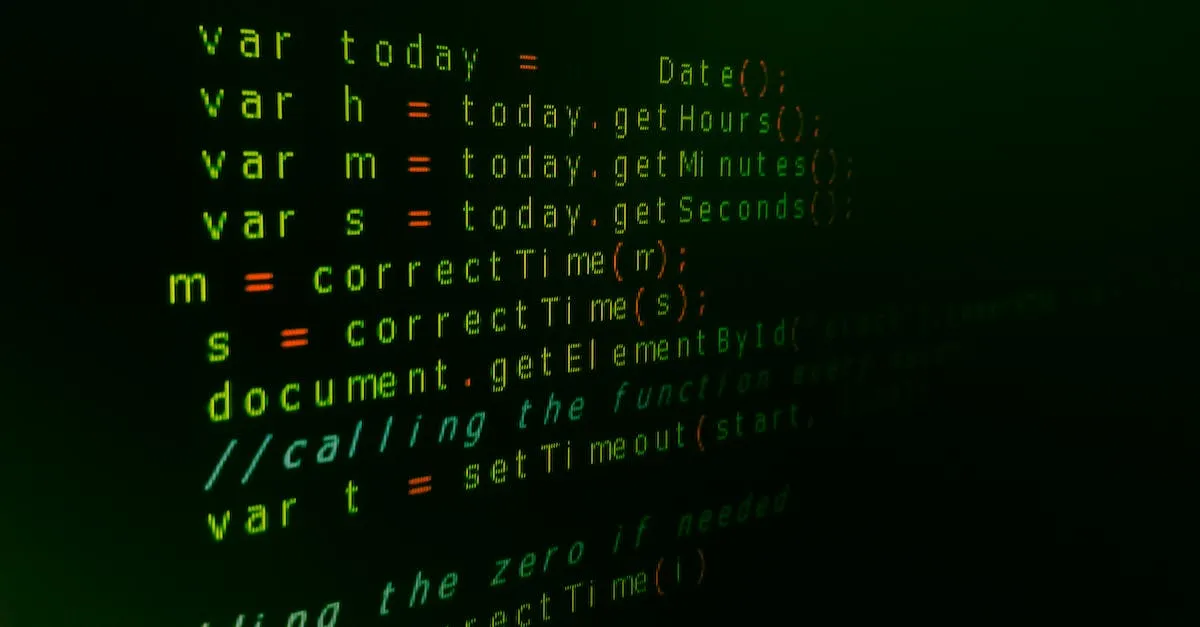Does Data Science Require Coding?
With data science taking center stage as one of the most in-demand fields, many are wondering if coding skills are necessary to break into the field. While advanced data scientists use a variety of programming languages, is writing code a fundamental requirement? Let’s analyze this key question.
If you’re short on time, here’s a quick answer: While coding skills are very advantageous, introductory data science roles may not require programming expertise. However, coding is essential for accessing, cleaning, analyzing, and modeling large datasets.
In this approximately 3000 word article, we’ll define data science roles, look at essential technical skills like Python and R, examine alternatives to coding, and provide guidance on learning to code for data science.
Defining Data Science Roles and Responsibilities
Data Analyst vs Data Scientist vs Machine Learning Engineer
When it comes to data science, there are several roles and responsibilities that are often confused with each other. The three main roles in data science are data analyst, data scientist, and machine learning engineer.
While these roles share some similarities, they also have distinct differences in terms of their skillsets and responsibilities.
A data analyst is primarily responsible for collecting, analyzing, and interpreting data to help businesses make informed decisions. They typically have strong skills in statistical analysis, data visualization, and SQL.
Data analysts are experts at using tools like Excel, Tableau, and Power BI to extract insights from data and present them in a meaningful way.
On the other hand, a data scientist goes beyond data analysis and focuses on developing complex algorithms and predictive models. They have a strong background in mathematics, statistics, and programming.
Data scientists are skilled in programming languages like Python and R, and they use advanced techniques such as machine learning and deep learning to solve complex problems and uncover hidden patterns in data.
A machine learning engineer, as the name suggests, specializes in implementing and deploying machine learning models into production. They work closely with data scientists to turn their models into practical applications.
Machine learning engineers have expertise in software engineering and are proficient in programming languages like Java or C++. They are responsible for building scalable and efficient systems that can handle large amounts of data and deliver real-time predictions.
So, to answer the question, does data science require coding? Yes, coding is an essential skill for data scientists and machine learning engineers. While data analysts may not need to code as extensively as data scientists or machine learning engineers, having some coding knowledge can certainly be beneficial in their roles.
Common Tasks and Duties in Data Science Work
Regardless of the specific data science role, there are common tasks and duties that professionals in this field perform. These tasks can vary depending on the industry and organization, but here are some examples:
- Collecting and cleaning data: Data scientists and analysts often spend a significant amount of time gathering data from various sources and ensuring its quality and integrity.
- Exploratory data analysis: This involves examining the data to identify patterns, trends, and outliers that can provide valuable insights.
- Building predictive models: Data scientists develop models using machine learning algorithms to make predictions or classifications based on historical data.
- Evaluating model performance: Data professionals need to assess the accuracy and effectiveness of their models and make improvements if necessary.
- Creating data visualizations: Presenting data in a visual format is crucial for communicating insights to stakeholders effectively.
- Collaborating with cross-functional teams: Data scientists often work closely with other departments, such as marketing or finance, to understand their needs and provide data-driven solutions.
It’s important to note that these tasks require a combination of technical skills, domain knowledge, and critical thinking. Data professionals need to be proficient in programming, statistical analysis, and data manipulation techniques to excel in their roles.
Key Coding Languages for Data Science
Python
Python is one of the most popular coding languages for data science. Its simplicity and readability make it a favorite among data scientists. Python has a wide range of libraries and frameworks specifically designed for data analysis, such as NumPy, Pandas, and Scikit-learn.
These libraries provide powerful tools for data manipulation, visualization, and machine learning. With Python, data scientists can easily clean and transform data, build statistical models, and create data visualizations.
R
R is another widely used programming language in data science. It was developed specifically for statistical analysis and data visualization. R has a vast collection of packages and libraries that make it a powerful tool for data manipulation and analysis.
With R, data scientists can perform complex statistical analyses, generate detailed visualizations, and build predictive models. R is particularly popular among statisticians and researchers due to its comprehensive statistical capabilities.
SQL
SQL (Structured Query Language) is a programming language used for managing and manipulating relational databases. While not a traditional programming language, SQL is essential for data scientists who work with large datasets stored in databases.
SQL allows data scientists to retrieve, update, and analyze data stored in databases efficiently. It is particularly useful for querying and aggregating data, performing joins, and creating complex data transformations.
Others Like Scala, Julia, MATLAB
In addition to Python, R, and SQL, there are other programming languages that data scientists may use, depending on their specific needs and preferences. Scala is a popular language for big data processing and is often used with Apache Spark.
Julia is a high-level programming language that emphasizes performance and is gaining popularity in the data science community. MATLAB is widely used in academia and industry for numerical computing and data analysis.
It’s important to note that while proficiency in coding is highly beneficial for data scientists, it is not the sole requirement for success in the field. Data scientists also need a solid understanding of statistics, mathematical modeling, and domain knowledge.
Coding skills are just one piece of the puzzle in the data science toolkit.
Non-Coding Alternatives for Introductory Data Science Roles
When it comes to data science, many people assume that coding is an absolute necessity. While coding is indeed a valuable skill in the field, there are also non-coding alternatives available for those looking to get started in introductory data science roles.
These alternatives can provide individuals with a foundation in data analysis and insights, without the need for extensive coding knowledge. In this article, we will explore some of these non-coding options.
Excel and Spreadsheets
Excel and other spreadsheet programs are often the go-to tools for many data analysts. These programs offer a user-friendly interface and a wide range of functions and formulas that can be used for data manipulation, analysis, and visualization.
With Excel, individuals can perform tasks such as filtering and sorting data, creating pivot tables, and generating charts and graphs. Additionally, Excel allows for the integration of external data sources and the automation of repetitive tasks.
While it may not have the same level of flexibility and complexity as coding languages, Excel can still be a powerful tool for introductory data science roles.
BI Tools Like Tableau and Power BI
Business Intelligence (BI) tools such as Tableau and Power BI are specifically designed for data visualization and analysis. These tools provide a drag-and-drop interface, allowing users to create interactive dashboards, reports, and visualizations without the need for coding.
With BI tools, individuals can connect to various data sources, transform and clean data, and create dynamic visualizations that uncover insights and trends. These tools also offer features like data storytelling, allowing users to present their findings in a compelling and visually appealing manner.
For those who prefer a more visual approach to data analysis, BI tools can be a great non-coding alternative.
No-Code AI Platforms
With the rise of artificial intelligence (AI), there has been an emergence of no-code AI platforms that enable individuals to build and deploy AI models without writing a single line of code. These platforms provide a user-friendly interface where users can define their problem statement, upload and preprocess data, select algorithms, and train and evaluate models.
Some popular no-code AI platforms include Google AutoML, Microsoft Azure Machine Learning Studio, and IBM Watson Studio. While these platforms may not offer the same level of customization and control as coding, they provide a bridge for individuals to leverage the power of AI without diving into complex coding languages.
Steps to Start Coding for Data Science
Take Introductory CS Courses
If you are new to coding and want to pursue a career in data science, taking introductory computer science (CS) courses is a great place to start. These courses will provide you with a solid foundation in programming concepts and techniques.
You will learn about variables, loops, functions, and other fundamental concepts that are essential for coding in data science.
There are several online platforms, such as Coursera, edX, and Udacity, that offer introductory CS courses. These courses are typically designed for beginners and will guide you through the basics of coding.
Additionally, many universities offer online CS courses that you can enroll in to gain a more comprehensive understanding of programming.
Learn Python and R
Python and R are two of the most popular programming languages used in data science. Learning these languages will equip you with the necessary skills to manipulate and analyze data effectively. Python is known for its simplicity and readability, making it a preferred choice for data scientists.
R, on the other hand, is highly specialized for statistical analysis and is widely used in academic and research settings.
There are numerous online resources and tutorials available to learn Python and R. Websites like DataCamp, Codecademy, and Kaggle offer interactive coding exercises and projects specifically tailored for data science.
These platforms provide hands-on learning experiences that will help you become proficient in Python and R.
Practice with Real Datasets
Once you have a solid understanding of programming concepts and have learned Python and R, it’s time to put your skills into practice. Working with real datasets will give you a taste of what data science is all about.
You will learn how to clean and preprocess data, perform exploratory data analysis, and build predictive models.
There are several websites and platforms where you can find real datasets to work with. The UCI Machine Learning Repository, Kaggle, and Data.gov are some of the popular sources for datasets. By working on these datasets, you will gain hands-on experience in applying coding skills to real-world problems.
Remember, coding is a crucial aspect of data science. It enables you to extract insights and make informed decisions based on data. By following these steps and continuously practicing your coding skills, you will be well on your way to becoming a proficient data scientist.
Gaining a Competitive Edge by Coding
In today’s data-driven world, coding has become an essential skill for data scientists. While it is possible to work with data using point-and-click tools or graphical interfaces, coding provides a level of flexibility and control that cannot be matched.
By mastering coding languages such as Python or R, data scientists can gain a competitive edge in their field.
Automate Tasks
Coding allows data scientists to automate repetitive tasks, saving them time and increasing their efficiency. With the ability to write scripts and programs, they can automate data cleaning, transformation, and analysis processes.
This not only speeds up their workflow but also reduces the chances of errors that can occur when performing these tasks manually.
For example, a data scientist can write a Python script to automatically scrape data from websites, eliminating the need for manual data collection. They can then use this data to perform analysis or build models, allowing them to focus on higher-level tasks rather than spending time on mundane data gathering.
Work with Large Unstructured Data
Another area where coding provides a significant advantage is working with large unstructured data. Point-and-click tools are often limited in their ability to handle big data or data that doesn’t conform to a specific structure.
By coding, data scientists can write custom algorithms to process and analyze such data.
For instance, imagine a scenario where a data scientist needs to analyze text data from millions of customer reviews. By coding, they can develop natural language processing algorithms to extract insights and sentiment analysis from this unstructured data.
This level of customization and flexibility is crucial when dealing with complex and diverse datasets.
Build Models from Scratch
While there are pre-built models available in libraries and frameworks, coding allows data scientists to build models from scratch. This gives them the freedom to tailor the models to their specific needs and domain expertise.
By understanding the underlying algorithms and techniques, they can fine-tune the models to achieve better performance.
For example, a data scientist can develop a custom machine learning model using Python to predict customer churn in a telecommunications company. They can experiment with different algorithms, feature engineering techniques, and hyperparameter tuning to create a model that outperforms off-the-shelf solutions.
Furthermore, by building models from scratch, data scientists can gain a deeper understanding of the underlying concepts and assumptions. This knowledge allows them to interpret and explain the results more effectively, providing valuable insights to stakeholders.
Conclusion
While optional for some introductory roles, coding skills enable data scientists to efficiently process, analyze, and make sense of large, complex datasets. Programming languages like Python and R provide powerful functionality for data wrangling, visualization, statistical modeling, machine learning, and more.
Aspiring data scientists should strongly consider developing foundational coding abilities, even if their current position doesn’t require it. With these technical skills, you’ll unlock your full potential to derive impactful data-driven insights.







